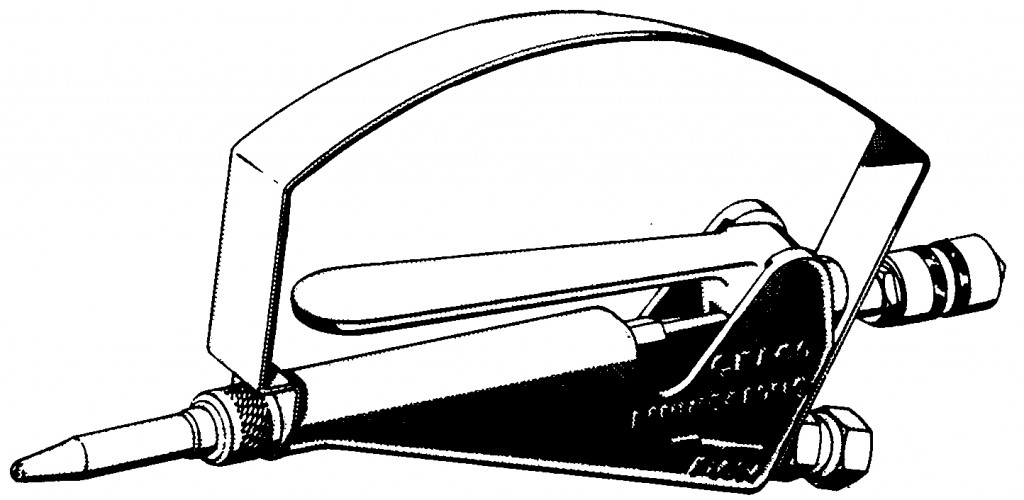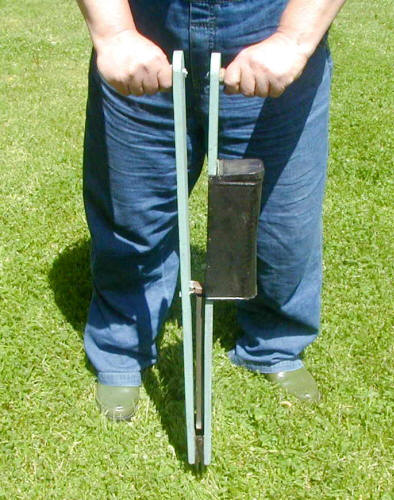[in initial development]
The objectives of this page and the links are to show:
Note: The primary focus of this information for workplace personnel to improve ability to select and adapt tools as well as fabricate simple homemade tools. Tool designers and manufacturers may find this overview helpful, but generally need more detailed guidelines for the specific tool and application.
- Common issues with hand tools, with ideas and concepts to overcome these shortcomings.
- Examples of tools and modifications to tools that solve common production problems.
Steps:
1. Evaluate the tool using the basic principles
Working posture: Position of hand and arm when using the tool
Force: Exertion needed to:
- hold the tool in place or carry to the point of use
- operate tool
- pull trigger
Height and reach: Appropriate length to avoid bending down or reaching upward
Motions: Excessive motions to operate the tool (power tools tend to reduce motions, but changing bits frequently might warrant a quick release chuck.
Fatigue: Constant gripping to hold the tool, hold the trigger down
Pressure points: hard edges, protruding points
Clearance
- Between the grip and the tool, for certain tools
- Grip and other parts of the tool
- Workstation or related equipment
Environmental
- Vibration and shock
- Temperature
2. Skim common issues and options for improvement for ideas and perspectives
Generic Issues
The primary interface between a human and a hand tool is the grip. Thus grip design is critical, no matter the application or whether the tool is powered or not. Common issues that must be addressed include: dimensions (diameter and length), shape, the amount of friction on the handle surface, and the orientation of the tool when used (i.e., the working position of the hand and arm).
Usually the weight and balance of a hand tool must be evaluated. If too heavy, the tool can be constructed from lightweight materials or a counterbalance added.
Finally, most tools require administrative processes, such as training, tool control, and maintenance.
Case study
 |
 |
| Before | After |
This example* shows practical application of a number of these concepts:
- Grip diameter is easily adjustable by turning a screw
- Full hand trigger reduces grip force and helps prevent any single finger from becoming overloaded.
- Grip angle promotes good wrist posture in the most common applications.
- Smooth shape to prevent pressure points
- Equally usable “upside down”
The final factor deserves additional comment. The design team conducted field studies at customer sites to include user feedback and suggestions for the gun. An unexpected discovery was that employee commonly held the gun “upside down,” which led to a grip shape that could be held in either orientation.
*The author was part of the design team, Graco, Inc., Minneapolis, MN. Other mechanical issues not related to ergonomics were also included, but not noted above.
Power tool issues
Power tools offer many advantages for both improving production and reducing strain on employees. However, there can be shortcomings as well, including excessive vibration, inadequate trigger design, high torque reaction, and heavy or obstructive hoses and connectors.
Useful adaptations
Techniques commonly applied in the workplace to reduce to improve effectiveness of production and reduce strain on employees exertion:
- Arms and counterbalances
- Mounts
- Extenders
- Straps and clips
- Second handles
- Forearm brace
Useful mechanisms
A series of mechanisms should be considered when creating or adapting hand tools. Depending on the situation, they may serve as hand tools in their own right, be incorporated into other tools, or added to other types of equipment and machinery.
Since antiquity, these mechanisms have been used to improve both productivity and human well-being. In their basic forms, they are often low cost
New uses can be found
- Levers
- Quick releases
- Hinges
- Gearing
- Foot pedals
- Pumps
- Vacuum
3 Brainstorm
Search other industries
Search catalogs, e.g. industrial supply catalogs
Internet search for antique tools
Squeezing tools
mount, compound levers
 |
| 19th Century corn planter |
For ages people have recognized the value of long-handled tools.
Negative leverage issue
Improve tool balance
off balance; that is, .
Dedicated tools
designed specifically for a particular task in a production operation, especially important rather than using generic tools. Topics in this hand tool knowledgebase help create these special use tools.
Process control
Most operations require control over hand tool use to one degree or another in order to prevent use of inappropriate tools. Workers can be encouraged to suggest ideas for selection and use of tools (so as not to dampen their initiative), but the selection of the tools should go through some type of process, even if very informal.
5 Specific types
